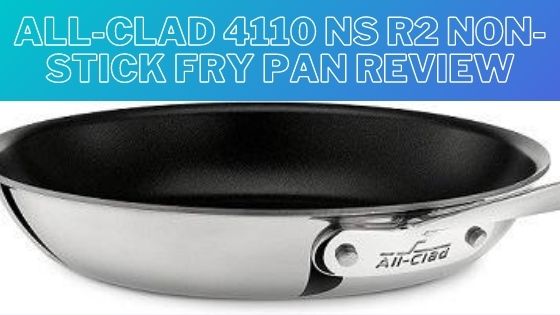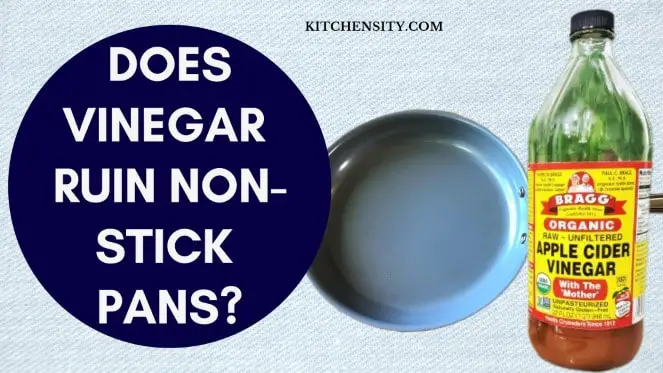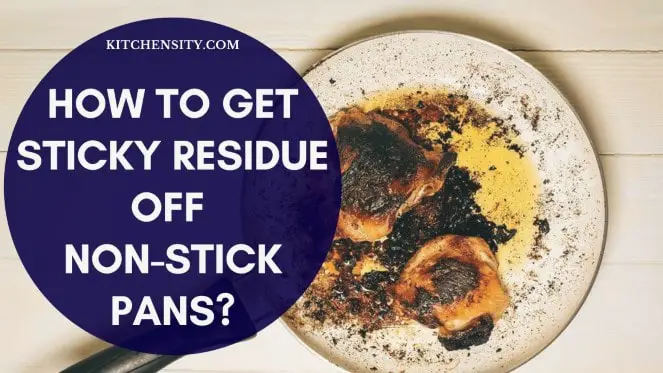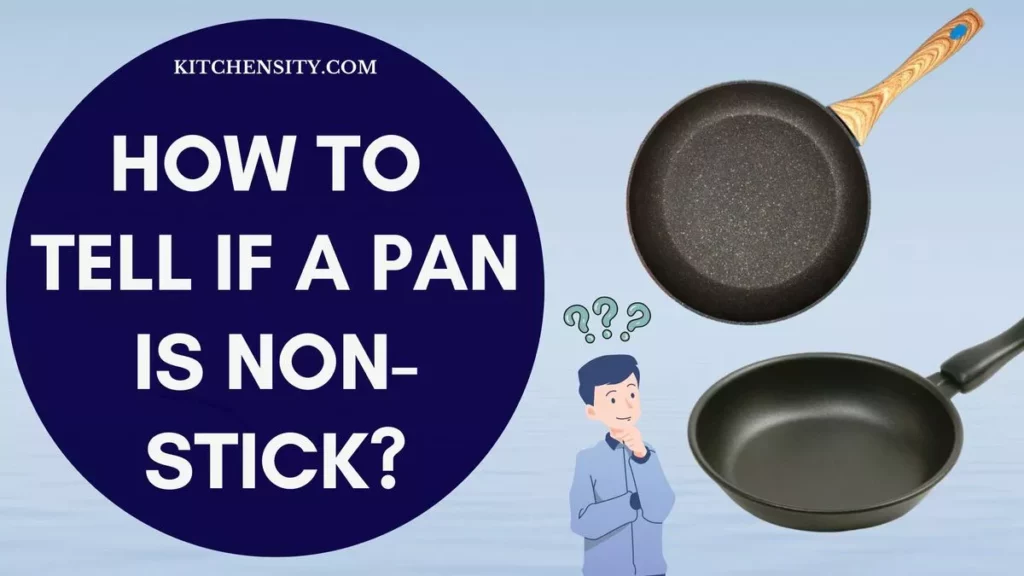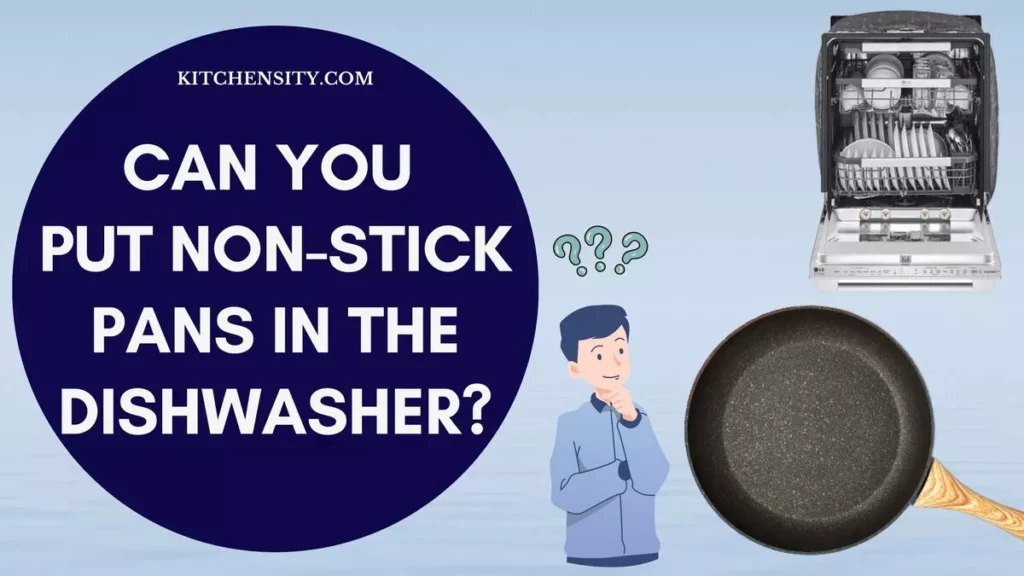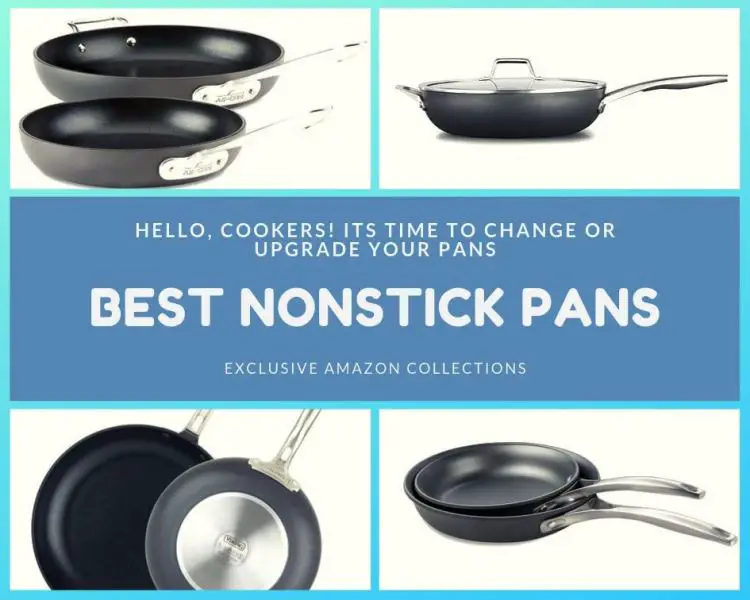Deep frying is a popular cooking technique to achieve crispy and delicious foods.
Traditionally, this method has been carried out using stainless steel or cast-iron pans, but with the advent of non-stick cookware, many wonder if they can deep fry in a non-stick pan.
In this article, we’ll explore whether it’s safe and practical to deep fry in a non-stick pan and what you should consider before attempting it.
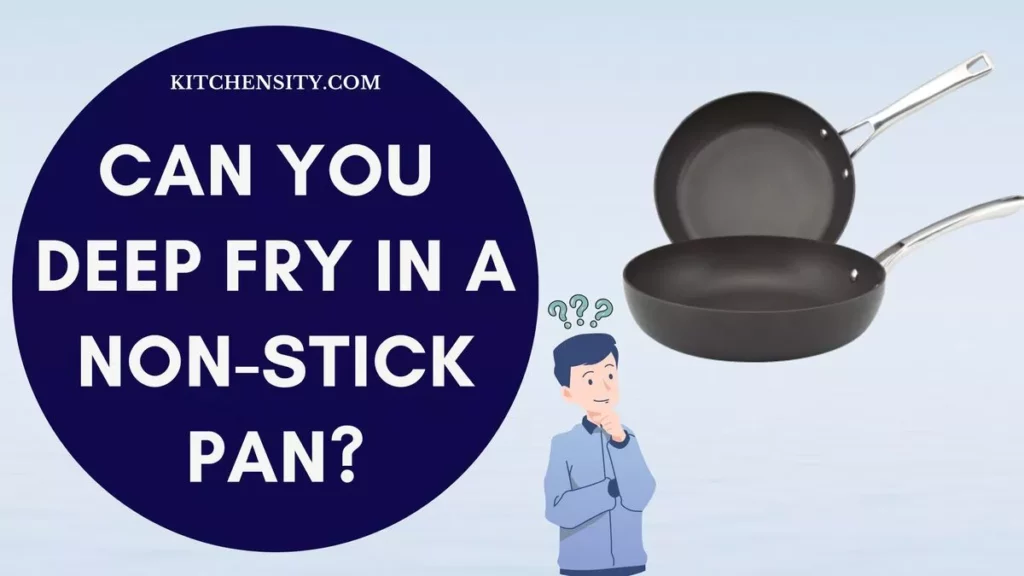
Table of Contents
- 1 Can You Deep Fry In A Non-Stick Pan?
- 2 Understanding Non-Stick Pans
- 3 The Science Of Deep Frying
- 4 Things To Keep In Mind When Deep Frying In A Nonstick Pan
- 5 How To Choose The Right Oil For Deep Frying In Non-stick Pan?
- 6 Choosing The Right Non-stick Pan For Deep Frying
- 7 How To Deep Fry In A Non-Stick Pan?
- 8 Deep Frying In Non-Stick Pans: Pros and Cons
- 9 Tips For Safe Deep Frying In Non-Stick Pans
- 10 Alternatives To Deep Frying In Non-Stick Pans
- 11 Can You Shallow Fry In A Non-Stick Pan?
- 12 Final Verdict
- 13 FAQs
- 13.1 Can You Use Oil In A Non-Stick Fry Pan?
- 13.2 Can You Deep Fry In Any Type Of Pan?
- 13.3 Can You Deep Fry In Any Type Of Non-Stick Pan?
- 13.4 Can I Use Metal Utensils While Deep Frying In A Non-Stick Pan?
- 13.5 How Do I Clean A Non-Stick Pan After Deep Frying?
- 13.6 What Oil Should I Use For Deep Frying In A Non-Stick Pan?
- 13.7 Is It Safe To Deep Fry In A Damaged Non-Stick Pan?
Can You Deep Fry In A Non-Stick Pan?
Yes, you can deep fry in a non-stick pan. The non-stick coating helps prevent food from sticking, making it a convenient option for frying. However, it’s essential to follow safety guidelines and avoid overheating the pan to maintain the coating’s integrity.
Also Read – Best Non-Stick Cookware Brands
Understanding Non-Stick Pans
Non-stick pans are designed with a special coating that prevents food from sticking to the surface during cooking. This coating is typically made of polytetrafluoroethylene (PTFE), commonly known as Teflon. The non-stick feature of these pans makes them incredibly convenient for everyday cooking, requiring less oil and ensuring easy cleanup.
The Science Of Deep Frying
- Deep frying involves submerging food in hot oil, typically at temperatures ranging from 350°F to 375°F (175°C to 190°C).
- As the food cooks, the moisture inside turns into steam, creating a crisp outer layer while keeping the inside tender and flavorful.
- The high heat and rapid cooking process are crucial for achieving the desired texture and taste.
Also Read – What To Look For When Buying Non-Stick Cookware?
Things To Keep In Mind When Deep Frying In A Nonstick Pan
When deep frying in a non-stick pan, there are several important considerations to ensure a safe and successful cooking experience. Here are the key things to keep in mind:
- Avoid Overheating: Never heat an empty non-stick pan or exceed the recommended cooking temperatures. High temperatures can cause the non-stick coating to break down, releasing harmful fumes and compromising the pan’s effectiveness.
- Use The Right Utensils: To preserve the non-stick coating, avoid using metal utensils while deep frying. Opt for heat-resistant silicone, wood, or plastic utensils that won’t scratch or damage the pan’s surface.
- Monitor The Coating: Regularly inspect the condition of the non-stick coating. If you notice any signs of wear, such as scratches or peeling, it’s time to replace the pan. A damaged coating can affect food release and lead to uneven cooking.
- Choose The Right Oil: Select oils with high smoke points, such as vegetable oil or peanut oil, for deep frying in non-stick pans. Oils with lower smoke points can produce excessive smoke and alter the flavor of the fried food.
- Preheat The Pan Properly: Preheat the non-stick pan over medium heat before adding the oil and food. Preheating ensures even cooking and prevents food from sticking to the surface.
- Avoid Crowding The Pan: When deep frying, avoid overcrowding the pan with too much food. Overcrowding can cause the oil temperature to drop, resulting in greasy and unevenly cooked dishes.
- Use A Lid Or Splatter Guard: Deep frying can sometimes cause oil splatters. Consider using a lid or splatter guard to prevent potential burns and keep your stovetop clean.
- Maintain The Right Oil Level: Ensure that there’s enough oil in the pan to submerge the food completely. An insufficient amount of oil may lead to uneven frying or cause the food to stick to the pan.
- Keep A Thermometer Handy: Use a kitchen thermometer to monitor the oil temperature accurately. Maintaining the correct frying temperature is essential for achieving crispy and well-cooked dishes.
- Use A Cooling Rack: After deep frying, place the fried items on a cooling rack instead of paper towels. This prevents the food from becoming soggy due to excess oil absorption.
- Exercise Caution With Frozen Foods: When deep frying frozen foods, be cautious, as adding frozen items to hot oil can cause splattering. Thaw frozen foods before frying or use a method that involves less oil, such as an air fryer.
- Stay Attentive: Deep frying requires constant attention. Never leave the stove unattended while frying to avoid accidents or overcooking.
Also Read – Best Nonstick Pans for Gas Stoves
How To Choose The Right Oil For Deep Frying In Non-stick Pan?
Choosing the right oil for deep frying in a non-stick pan is crucial to achieving the best frying results and maintaining the pan’s non-stick properties.
Here are the key factors to consider when selecting the oil:
- High Smoke Point: Opt for oils with high smoke points to prevent excessive smoking during deep frying. Oils with low smoke points can lead to unpleasant odors, alter the taste of the food, and potentially release harmful compounds.
- Neutral Flavor: Choose oils with a neutral flavor, as they won’t overpower the taste of the fried food. Neutral oils allow the natural flavors of the ingredients to shine through, providing a delicious and well-balanced taste.
- Stability: Look for oils that are stable at high temperatures and don’t break down easily during deep frying. Stable oils ensure that the frying process remains consistent and prevents the formation of harmful compounds.
- Health Considerations: Consider the health aspects of the oil you choose. Some oils, such as olive oil or avocado oil, are rich in healthy monounsaturated fats, making them a nutritious option for deep frying.
- Affordability: Evaluate the cost of the oil, especially if you plan to use it frequently for deep frying. While some high-quality oils may be more expensive, there are budget-friendly options available without compromising on performance.
- Availability: Choose an oil that is readily available in your area and easily accessible for regular use.
- Consider The Type Of Food: Different oils complement specific types of foods better. For example, peanut oil is excellent for frying foods with Asian flavors, while vegetable oil is versatile and suitable for various dishes.
Common oils suitable for deep frying in a non-stick pan include:
- Canola Oil: With a high smoke point and a mild flavor, canola oil is a popular choice for deep frying. It contains low levels of saturated fat and is budget-friendly.
- Peanut Oil: Known for its high smoke point and nutty flavor, peanut oil is commonly used in Asian cuisine for deep frying. It imparts a pleasant taste to the food and works well for dishes like tempura.
- Safflower Oil: Safflower oil has a high smoke point and a neutral flavor, making it ideal for deep frying a wide range of foods.
- Sunflower Oil: Sunflower oil is another option with a high smoke point and neutral taste, suitable for deep frying various dishes.
- Grapeseed Oil: Grapeseed oil has a high smoke point and a light flavor, making it a good choice for deep frying without overpowering the natural taste of the food.
Remember that regardless of the oil you choose, it’s essential to maintain the proper frying temperature and avoid overheating the pan to protect the non-stick coating and ensure safe and delicious deep-fried dishes.
Also Read – Can You Put Your Non-Stick Pans In The Dishwasher?
Choosing The Right Non-stick Pan For Deep Frying
Choosing the right non-stick pan for deep frying requires considering several essential factors. Here’s a step-by-step guide to help you make the best choice:
- Size And Capacity: Consider the size of the pan based on your cooking needs. If you frequently cook for a large family or group, a larger pan with a higher capacity will be more suitable. For smaller households, a medium-sized pan should suffice.
- Material And Construction: Look for a non-stick pan made of high-quality materials with durable construction. Pans with multiple layers of non-stick coating are generally more long-lasting and effective in preventing food from sticking.
- Heat Resistance: Ensure that the non-stick pan you choose is designed to withstand the high temperatures required for deep frying. Check the pan’s maximum heat resistance and avoid using it above the recommended temperature range.
- Handles And Grip: Opt for a non-stick pan with comfortable and heat-resistant handles that provide a secure grip. Handles that are riveted or welded to the pan’s body are more durable and less likely to loosen over time.
- Compatibility With Induction And Stove Types: If you have an induction cooktop or use other stove types, verify that the non-stick pan is compatible with your cooking surface. Not all non-stick pans work on induction stoves.
- Weight: Consider the weight of the pan, especially if you plan to move it frequently or have difficulty handling heavy cookware. A lightweight pan may be more convenient for daily use.
- Lid Inclusion: Some non-stick pans come with a matching lid, which can be helpful for certain deep-frying recipes. A lid helps contain splatters and steam, reducing mess and ensuring even cooking.
- Non-Stick Coating Type: There are various types of non-stick coatings available. Look for pans with PFOA-free coatings for peace of mind regarding health concerns. Ceramic or diamond-infused coatings are popular alternatives known for their durability.
- Price And Brand: Set a budget that suits your needs and explore reputable brands known for producing high-quality cookware. While there are affordable options available, investing in a reliable and trusted brand may offer better performance and longevity.
- Customer Reviews: Before making a purchase, read customer reviews and feedback on the specific non-stick pan you’re considering. Genuine experiences from other users can provide valuable insights into the pan’s performance and durability.
- Warranty: Check if the pan comes with a warranty, as it demonstrates the manufacturer’s confidence in the product’s quality. A warranty can offer protection against potential defects or issues.
- Special Features: Some non-stick pans come with additional features, such as pour spouts, helper handles, or textured surfaces for improved food release. Assess whether these features align with your cooking preferences and needs.
Also Read – How To Tell If A Pan Is Non-Stick?
How To Deep Fry In A Non-Stick Pan?
Deep frying in a non-stick pan requires some careful steps to ensure safe and successful cooking. Here’s a step-by-step guide on how to deep fry in a non-stick pan:
- Choose The Right Oil: Select an oil with a high smoke point, such as canola, peanut, safflower, or sunflower oil. These oils are suitable for deep frying and won’t produce excessive smoke.
- Add The Oil: Pour enough oil into the non-stick pan to submerge the food you intend to fry. The oil level should be sufficient to cover the food entirely but not so high that it overflows when adding the food.
- Preheat The Pan: Preheat the non-stick pan over medium heat for a few minutes before adding the food. This ensures the oil reaches the proper frying temperature evenly.
- Check The Oil Temperature: To ensure the oil is hot enough for deep frying, use a kitchen thermometer. The ideal frying temperature is typically between 350°F to 375°F (175°C to 190°C).
- Prepare The Food: While the oil is heating, prepare the food you want to deep fry. Coat the food in flour, batter, or breadcrumbs as desired to achieve a crispy outer layer.
- Gently Add The Food: Carefully add the food to the hot oil using tongs or a slotted spoon. Avoid dropping the food into the pan to prevent splatters.
- Avoid Overcrowding: Fry the food in batches if necessary to avoid overcrowding the pan. Overcrowding can cause the oil temperature to drop and result in uneven frying.
- Monitor The Cooking Time: Keep a close eye on the food as it fries. The cooking time will vary depending on the type and size of the food. Remove the food from the oil once it is golden brown and fully cooked.
- Drain Excess Oil: After frying, use a slotted spoon or wire mesh strainer to remove the food from the pan. Allow the excess oil to drip off before placing the food on a plate lined with paper towels to absorb any additional oil.
- Cool Down: Let the non-stick pan cool down completely before cleaning it. Do not pour hot oil down the sink, as it can cause clogs and is unsafe. Once the oil has cooled, transfer it to a heat-resistant container for proper disposal or reuse.
- Cleaning The Pan: Wash the non-stick pan with warm, soapy water and a soft sponge. Avoid using abrasive cleaners or metal scrubbers, as they can damage the non-stick coating.
- Storage: Store the clean, dry non-stick pan in a safe place to prevent damage and prolong its lifespan.
Also Read – How To Get Sticky Residue Off Non-Stick Pans?
Deep Frying In Non-Stick Pans: Pros and Cons
Benefits Of Deep Frying In Non-Stick Pans
Deep frying in non-stick pans offers several benefits that make it an attractive cooking method. Here are the key advantages:
- Healthier Cooking:
- Using non-stick pans for deep frying requires less oil compared to traditional pans.
- The non-stick surface reduces the need for excessive oil, making your fried dishes lighter and healthier.
- With less oil absorbed, you can enjoy crispy and delicious food without guilt.
- Easy Food Release:
- The primary advantage of non-stick pans is their ability to prevent food from sticking to the surface.
- When deep frying, this feature is especially valuable, as it ensures that your food releases easily without leaving a sticky mess behind.
- The effortless food release also simplifies the cleaning process afterward.
- Even Cooking:
- Non-stick pans offer even heat distribution, which is crucial for deep frying.
- The consistent heat ensures that the food cooks evenly on all sides, preventing uneven browning or overcooking.
- This results in perfectly fried dishes with a crispy exterior and tender interior.
- Time And Energy Efficiency:
- Non-stick pans heat up quickly and retain heat efficiently.
- This means you can achieve the desired frying temperature faster, saving both time and energy during the cooking process.
- The efficient heat retention also helps maintain a stable frying temperature, resulting in better frying results.
- Versatility: Non-stick pans are not limited to deep frying alone. You can use them for various cooking tasks, such as sautéing, searing, and shallow frying. Their versatility makes them a valuable addition to any kitchen.
- Easy Cleanup:
- Deep frying can be messy, but with non-stick pans, cleanup becomes a breeze.
- Since food is less likely to stick to the surface, you won’t have to scrub or soak the pan extensively.
- A simple wash with warm, soapy water and a gentle sponge is often sufficient to clean the pan thoroughly.
- Reduced Caloric Intake:
- With less oil used in deep frying, the calorie content of the fried dishes is lower.
- This can be especially beneficial for those trying to watch their caloric intake while still enjoying their favorite fried foods.
- No Seasoning Required:
- Unlike cast-iron pans, which require seasoning to maintain their non-stick properties, non-stick pans are ready to use straight out of the box.
- This saves you time and effort in the kitchen.
- Ideal For Delicate Foods:
- Non-stick pans are particularly useful when frying delicate or soft foods that might easily break apart or stick to traditional pans.
- The non-stick surface allows you to handle these foods more gently and achieve better results.
- Suitable For Beginners:
- Non-stick pans are user-friendly and forgiving, making them an excellent choice for beginner cooks.
- Their non-stick feature reduces the risk of burning or ruining dishes, providing a positive cooking experience.
Also Read – Does Vinegar Ruin Non-Stick Pans?
Drawbacks Of Deep Frying In Non-Stick Pans
While deep frying in non-stick pans offers several benefits, there are also some drawbacks to consider. Here are the key drawbacks of using non-stick pans for deep frying:
- High-Temperature Limitations:
- Non-stick pans have temperature limitations when it comes to deep frying.
- The high temperatures required for deep frying can cause the non-stick coating to degrade over time.
- As the coating breaks down, it may release harmful fumes and particles into the air, posing potential health risks.
- Not Suitable For Long-Term Use:
- Deep frying involves prolonged exposure to high heat, which can accelerate the wear and tear of non-stick coatings.
- Over time, the non-stick surface may become less effective, leading to food sticking and uneven cooking.
- This reduces the lifespan of the pan compared to other traditional frying pans.
- Potential Health Concerns:
- The safety of non-stick coatings has been a topic of debate due to the potential health risks associated with the chemicals used in their production, such as perfluorooctanoic acid (PFOA).
- Although many modern non-stick coatings are PFOA-free, there may still be concerns about the long-term health effects of using non-stick pans for deep frying.
- Not Ideal For Certain Foods:
- While non-stick pans are great for cooking delicate foods, they may not be suitable for certain deep-fried dishes that require high-temperature frying.
- Foods that require prolonged deep frying at very high temperatures, such as certain types of doughnuts or crispy fried chicken, may not achieve the desired results in non-stick pans.
- Limited Browning And Flavor Development:
- Achieving the perfect browning and flavor development in deep-fried dishes can be more challenging with non-stick pans.
- The non-stick surface may inhibit the Maillard reaction, which is responsible for creating those desirable golden-brown hues and enhancing the taste of fried foods.
- Not Compatible With Metal Utensils:
- Metal utensils can easily scratch and damage the non-stick coating.
- When deep frying, it’s crucial to use silicone, wood, or plastic utensils to avoid compromising the pan’s non-stick properties.
- Not For High-Volume Cooking:
- Non-stick pans are generally designed for home cooking or small-scale usage.
- For commercial or high-volume deep frying, traditional stainless steel or cast-iron pans are preferred due to their durability and ability to withstand frequent and intense use.
- Risk Of Overheating: Overheating a non-stick pan can lead to the release of harmful fumes and smoke. Careless use or neglect in monitoring the pan’s temperature can result in damage to both the pan and the quality of the fried food.
While non-stick pans offer convenience and ease of use for deep frying, they also have drawbacks, including temperature limitations, potential health concerns, reduced durability, limited browning and flavor development, incompatibility with metal utensils, and unsuitability for high-volume cooking.
It’s essential to weigh these drawbacks against the benefits when deciding whether to use a non-stick pan for deep frying or exploring alternative cooking methods.
Also Read – How To Fix Scratched Non-Stick Pans?
Tips For Safe Deep Frying In Non-Stick Pans
Deep frying in non-stick pans can be safe and successful when following these essential tips:
- Use The Right Oil: Choose an oil with a high smoke point, such as canola, peanut, or sunflower oil. Oils with low smoke points can lead to excessive smoking and alter the taste of the food.
- Avoid Overheating: Never heat an empty non-stick pan or exceed the recommended cooking temperatures. High temperatures can damage the non-stick coating and release harmful fumes.
- Preheat Carefully: Preheat the non-stick pan over medium heat for a few minutes before adding the oil and food. Proper preheating ensures even cooking and prevents food from sticking.
- Monitor Oil Temperature: Use a kitchen thermometer to monitor the oil’s temperature. The ideal frying temperature is typically between 350°F to 375°F (175°C to 190°C).
- Add Food Gently: Carefully add the food to the hot oil using tongs or a slotted spoon to avoid splattering and potential burns.
- Avoid Overcrowding: Fry the food in batches if needed to avoid overcrowding the pan. Overcrowding can lead to uneven frying and affect the quality of the food.
- Use Heat-Resistant Utensils: Avoid using metal utensils that can scratch the non-stick coating. Opt for heat-resistant silicone, wood, or plastic utensils.
- Inspect The Coating: Regularly check the non-stick coating for any signs of wear or damage. If the coating is compromised, consider replacing the pan to avoid potential health risks.
- Maintain Oil Level: Ensure there is enough oil in the pan to submerge the food completely. Adding insufficient oil may result in uneven frying and food sticking to the pan.
- Stay Attentive: Deep frying requires constant attention. Never leave the stove unattended while frying to prevent accidents and overcooking.
- Use A Lid Or Splatter Guard: Consider using a lid or splatter guard to minimize oil splatters and keep your stovetop clean.
- Use A Cooling Rack: After frying, place the food on a cooling rack instead of paper towels to prevent the food from becoming soggy due to excess oil absorption.
- Allow Oil To Cool: Allow the non-stick pan and oil to cool completely before cleaning. Never pour hot oil down the sink, as it can cause clogs and is unsafe.
- Clean With Care: Wash the non-stick pan with warm, soapy water and a soft sponge. Avoid abrasive cleaners or metal scrubbers that can damage the coating.
Also Read – All-Clad 4110 NS R2 Non-Stick Fry Pan Review
Alternatives To Deep Frying In Non-Stick Pans
Here are some alternative cooking methods that you can try in a non-stick pan:
- Pan-Searing: Searing food in a non-stick pan with a small amount of oil can create a flavorful crust on the outside while keeping the inside tender. It works well for meats like steaks, chicken breasts, and pork chops.
- Sauteing: Sauteing involves cooking small pieces of food quickly in a non-stick pan with a bit of oil over medium-high heat. This method is suitable for vegetables, shrimp, or thinly sliced meats.
- Stir-Frying: Use a non-stick pan to stir-fry a mix of bite-sized vegetables and meats over high heat with minimal oil. This method ensures a quick and flavorful cooking process.
- Shallow Frying: Shallow frying is similar to deep frying but with less oil. Coat the food in flour or breadcrumbs and fry it in a non-stick pan with enough oil to partially submerge the food.
- Oven-Frying: Instead of deep frying, try oven-frying in a non-stick pan. Coat the food with breadcrumbs or a light brushing of oil and bake it in the oven for a crispy texture.
- Pan-Frying: Pan-frying involves cooking food in a non-stick pan with enough oil to cover the bottom. It’s ideal for items like breaded chicken cutlets or eggplant slices.
Also Read – Can You Put A Roasting Pan On The Grill?
Can You Shallow Fry In A Non-Stick Pan?
Yes, you can shallow fry in a non-stick pan. Shallow frying is a cooking method where food is partially submerged in a small amount of hot oil or fat in a pan. It is an excellent alternative to deep frying when you want to achieve a crispy texture with less oil.
Non-stick pans are particularly well-suited for shallow frying because of their non-stick coating. The non-stick surface prevents food from sticking to the pan, making it easier to flip and turn the food without it breaking apart.
To shallow fry in a non-stick pan, follow these steps:
- Choose The Right Oil: Select an oil with a high smoke point, such as canola, vegetable, or sunflower oil. Add just enough oil to coat the bottom of the pan evenly.
- Preheat The Pan: Preheat the non-stick pan over medium heat for a few minutes before adding the food. Make sure the oil is hot enough, but not smoking.
- Prepare The Food: Season and coat the food with flour, breadcrumbs, or batter if desired to achieve a crispy outer layer.
- Add The Food To The Pan: Gently place the food in the hot oil, being careful not to overcrowd the pan. Allow some space between each piece to ensure even cooking.
- Shallow Fry The Food: Cook the food on one side until it develops a golden-brown crust, then carefully flip it to cook the other side. Use tongs or a spatula to handle the food gently and prevent sticking.
- Monitor The Cooking Time: Keep an eye on the food as it cooks. The cooking time will vary depending on the type and thickness of the food. Remove the food from the pan once it is evenly cooked and has a crispy texture.
- Drain Excess Oil: After shallow frying, use a slotted spoon or place the food on a plate lined with paper towels to remove any excess oil.
- Serve: Once the food is drained, it is ready to be served and enjoyed.
Shallow frying in a non-stick pan offers the advantage of using less oil while still achieving a deliciously crispy result. The non-stick coating ensures that the food doesn’t stick to the pan, making the cooking process easier and cleanup a breeze.
Also Read – Can You Put A Baking Pan On The Grill?
Final Verdict
While it is possible to deep fry in a non-stick pan, caution must be exercised to maintain the pan’s integrity and safety. Non-stick pans offer convenience and ease of use. Still, they may not be the most suitable option for high-temperature cooking methods like deep frying.
If you choose to deep fry in a non-stick pan, remember to follow the provided tips to ensure a safe and enjoyable cooking experience.
Ultimately, the choice to deep fry in a non-stick pan depends on personal preferences and the type of food being prepared.
By following safety guidelines, using the right oil, and maintaining the non-stick pan properly, deep frying in a non-stick pan can be a satisfying and enjoyable cooking method to add to your culinary repertoire.
Also Read – How To Keep Food From Sticking To Copper Pans?
FAQs
-
Can You Use Oil In A Non-Stick Fry Pan?
Yes, you can use oil in a non-stick fry pan. Adding a small amount of oil can help enhance the cooking process and prevent sticking.
-
Can You Deep Fry In Any Type Of Pan?
No, you cannot deep fry in any type of pan. Deep frying requires a pan with high sides to hold a sufficient amount of oil and prevent oil splatter.
-
Can You Deep Fry In Any Type Of Non-Stick Pan?
Not all non-stick pans are suitable for deep frying. It is essential to use a high-quality pan with a robust coating designed to withstand high temperatures.
-
Can I Use Metal Utensils While Deep Frying In A Non-Stick Pan?
Using metal utensils can scratch and damage the non-stick coating. Stick to silicone, wood, or plastic utensils to protect the pan’s surface.
-
How Do I Clean A Non-Stick Pan After Deep Frying?
Allow the pan to cool before washing it with warm, soapy water and a soft sponge. Avoid abrasive cleaners or scrubbing pads that may harm the coating.
-
What Oil Should I Use For Deep Frying In A Non-Stick Pan?
Opt for oils with high smoke points, such as vegetable oil or peanut oil, as they are less likely to produce excessive smoke during frying.
-
Is It Safe To Deep Fry In A Damaged Non-Stick Pan?
Cooking with a damaged non-stick pan is not recommended, as it may release harmful particles into the food and the air. Replace the pan if it shows signs of wear and tear.
Katrina Smith is a seasoned expert with over 25 years of experience in all things related to cooking and the kitchen. As an avid cook and kitchen enthusiast, she is passionate about sharing her knowledge and expertise on cookware, kitchen appliances, kitchen tips, and kitchen staples.
Through her articles and reviews, Katrina aims to inspire and help others improve their cooking skills, experiment with different ingredients, and invest in quality cookware and appliances.

